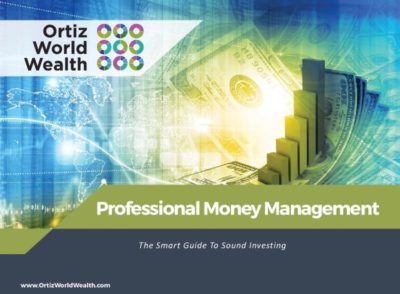
16 Jan Market Volatility Is Surging; Are You Prepared?
The economic boom that has continued since the end of the Great Recession has seen stock markets rebound and investors raking in record profits. But in 2018, the markets experienced a bit of a hiccup, with U.S. markets seeing two corrections (defined as a decline of 10% or more) and a dramatic increase in volatility. To counter the roller-coaster stock market ride, some investors are using non-traded alternatives, which can help diversify portfolios and avoid impulsive buying and selling.
Understanding Volatility
What is volatility and how does it impact the market? In simple terms, volatility is a measure of how much the price of a stock, bond, market, etc. changes over time. This is often expressed as a standard deviation, but there is also the Volatility Index (VIX) from the Chicago Board Options Exchange (CBOE).As with any index, investors can’t buy or sell positions in the VIX directly, but some companies have investment products and services linked to it.
Experts Predict Higher Volatility In 2019
More than 77 percent of institutional investors believe that volatility will increase into 2019, a recent survey found. When the economy has grown for a prolonged period, volatility almost always surfaces – and we see that happening in the U.S. stock market right now.
With the job market at its peak and the anticipation of a slowdown, investors are starting to get nervous, and many are pulling out in fear of uncertainty, leading to others exiting the markets as well. When everyone rushes to exit the market, it creates a ripple effect that can drive a massive sell-off.
Diversification and Investing for the Long Haul
One the best ways you can tackle volatility is by diversifying your portfolio and staying invested regardless of market conditions – and non-traded alternatives can help you achieve both ends. Morningstar, a global research and investment management firm, looked at data from several asset categories, and measured volatility for each. Data examined from 2007 through 2016 reflects how emerging market stocks are more prone to volatility, with a standard deviation of about 12 percent. Domestic and international stocks came second and third, respectively, at 9 and 8 percent. On the other hand, direct real estate and private debt were far less volatile (with a standard deviation of 6 percent). Private equity was even less than that, under 4 percent.
Adding non-traded alternatives to your portfolio may help you take advantage of those lower standard deviations. Research has shown that investors with portfolios of diversified assets with varying levels of risk and rates of returns tend to reduce the overall risk to their portfolio. Additionally, non-traded alternatives can help you focus and stay invested over the long term. Unlike equity markets, most alternatives don’t have secondary markets on which investors can quickly sell their positions. This helps remove the impulsive and fear-driven selling that many investors engage in during times of volatility as they attempt to exit or time the market. The lack of secondary markets also means that non-traded alternatives are less likely to be affected by the price swings driven by market sentiment, and there is no need for investors or portfolio managers to sell their positions to appease stakeholders.
To be clear, while investors may not be able to liquidate their assets in non-traded alternatives during periods of volatility, it doesn’t mean they are without risk. If the prices of the underlying assets of the alternative decline over time, you can still lose money. And the illiquidity means you won’t be able to cash out if you need money for an emergency. However, if you stay invested, there is strong evidence that you can improve the overall performance of your portfolio, the reason being that the worst and best days in stocks often happen within a short time period. For example, if you held your investment when the market was at the bottom during the last recession, you would have more than recovered your losses by now, but. if you sold at the bottom and then waited a year before re-entering the market, you would have missed out on a large percentage of the rebound.
Staying Invested Is Critical To Long Term Success
The fact is that it serves no useful purpose to try to time the market. With volatility more likely to skyrocket in 2019, the best way to navigate turbulent times is to rely on time-tested fundamentals.
As we discussed above, diversification and staying invested will go a long way in helping you meet your long-term goals. While non-traded alternatives might not be appropriate for every investor, they can help you focus on core fundamentals and help you stay the course regardless of market conditions.




No Comments